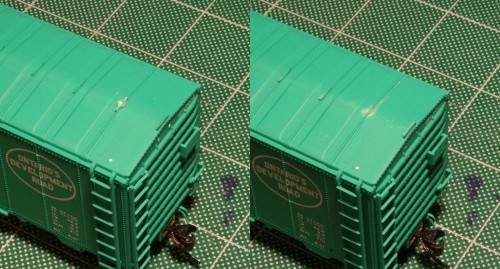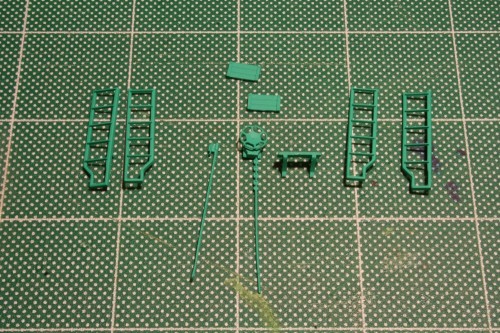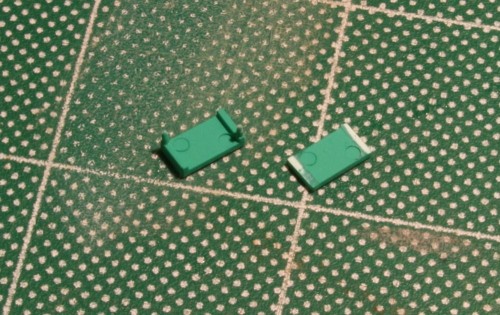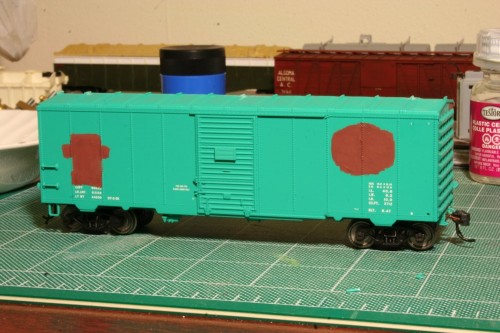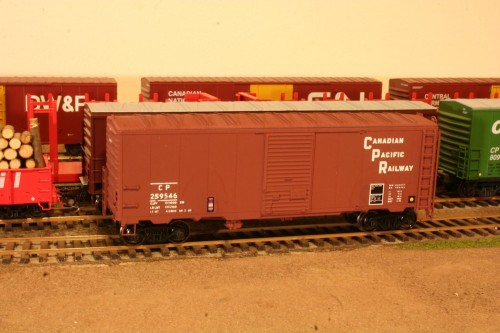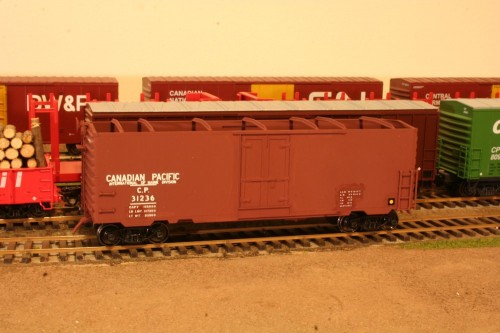In the late 1970s to early 1980s the Algoma Central acquired some secondhand equipment from northern Ontario’s other regional railroad, the Ontario Northland Railway. This consisted of about 30 open hoppers acquired in 1978 for general service (basically meaning sinter from Wawa) and a number of old 40′ boxcars. Quite a number of former Ontario Northland boxcars ended up with 10000 series work service numbers as tool and storage cars, and a small handful received standard fleet numbered in the 2902-2914 series. These cars were used for the railways own local on-line freight service, hauling company supplies and materials, express and less than carload traffic to various remote places along the line, for which the railroad was the only way to bring in any sort of supplies or building materials. The railway used to run a weekly wayfreight for this service. I consider it highly unlikely that these cars ever left AC rails.
These boxcars were originally built in 1947-48 for the Ontario Northland by National Steel Car in Hamilton, ON. A few years ago, True Line Trains made modeling these cars easier by producing a ready-to-run model of this car, which was exclusively rostered (as original purchasers) by Canadian National and Ontario Northland.
These cars did receive a few modifications though, so a little bit of work to the model is required.
Here’s AC 2915 at the Steelton shops in 2004. The car’s running boards have been removed (a common modification as roof running boards on boxcars were banned from interchange service on all railways in the 1970s) and interestingly, the brake wheel on the end of the car has also been relocated to a lower mounting.
The first step obviously is to remove the running board (roof walk) from the car. It’s best to shear the mounting pins as you do this, or once removed, cut off the mounting pins and glue them back into the body mounting holes to plug them up. On the left side of the picture above, you can see how the mounting pins are located in the middle of several of the running board supports molded into the roof. While good for hiding the mounting pins when the running boards are installed, it’s a little visible when the running boards are removed. So I used a needle file to file the rounded housing around the mounting pin off into a flat running board support like all the others on the car.
The next step is to similarly (and *carefully*) remove the ladders and end hardware details from the car, since the ladders will need to be cut down in height, and the brake wheel mounting reinstalled at the lower height. I cut the ladders off after the 5th rung from the bottom, following reference photographs.
While I had everything removed, I didn’t like how far away from the side of the car the tack boards were mounted, so I trimmed the back off the tack board so that when I glue it back on using CA glue, the tack board is much more snug to the end of the car.
While most of the cars in this series were in the Ontario Northland’s early brown paint scheme (like the 2915 at the top of this post), this particular car will be given the road number AC 2906, which was in the Ontario Northland’s jade green colours. I have several more of the True Line Trains cars in both jade and brown, so more of the brown cars will join this one.
The patching out of the former Ontario Northland name and logo was clearly done with a paint roller on the prototype cars, so I took out some mineral brown paint and hand painted the patchwork with a small brush.
That’s as far as I’ve gotten so far; the next step will be to remount the ladders and brake hardware, renumber the car with stencil decals and weather it. All in all, a pretty straightforward job however, made easy by TrueLine’s ready-to-run Ontario Northland models.


